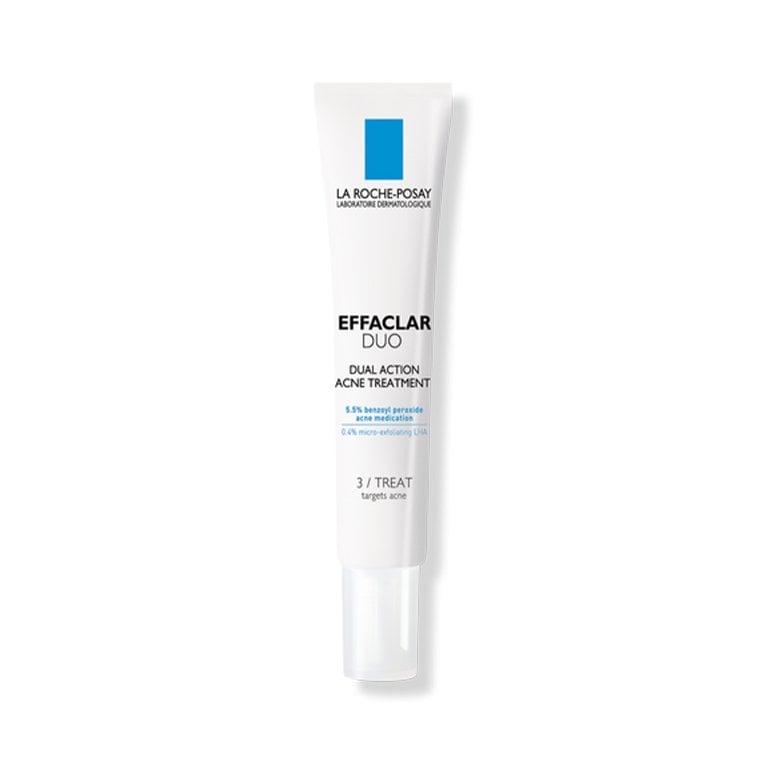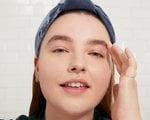I Tried the La Roche-Posay Effaclar Duo Acne Spot Treatment in Pursuit of Clearer Skin
January 31, 2023
The arrival of a breakout is never welcome — I can’t say I’ve ever been excited to see one popping up on my face. But the biggest, most inflamed spots always seem to appear at the most inconvenient times — before a party, date or photoshoot, or on days when I’m already feeling high-stress. Since even the strictest of skincare routines can’t prevent blemishes entirely, I’ve learned to keep a spot treatment on hand to deal with random pimples. Below, find out what causes adult acne, the anti-acne ingredients to look out for and my review of the La Roche-Posay Effaclar Duo Acne Spot Treatment, my go-to product for treating breakouts.
What Is Adult Acne?
According to the American Academy of Dermatology, adults can continue to get acne well into their 30s, 40s, and even 50s — aptly called adult acne — even if they were blessed with clear skin in their teens. It presents most often as papules, pustules and cysts around the mouth, chin, jawline and on the cheeks. Below, find some of the most common triggers for adult acne, per the AAD.
Fluctuating Hormone Levels
An imbalance of hormones — which can typically occur around menstruation, during pregnancy, puberty, or menopause — can cause sebaceous glands to act up and breakouts to ensue.
Stress
As Dr. Rebecca Kazin, a Maryland-based board-certified dermatologist and Skincare.com consultant, previously told Skincare.com, “Generally, stress worsens whatever condition you already have.” An increase in cortisol, the hormone your body creates when stressed, can further trigger breakouts.
Bacteria
This one’s a no-brainer. When bacteria comes into contact with your clogged pores, it can spell disaster. That’s why a proper skincare routine is crucial, as well as keeping your sheets, pillowcases, cell phone and anything else that comes in frequent contact with your face clean. Always make sure to wash your hands before applying skincare.
And while you’ve probably heard this countless times, it bears repeating that picking or popping your pimples is not the way to go. Not only can doing so increase inflammation and introduce new bacteria that can worsen your pimples, it can also result in permanent scarring and dark spots.
Common Acne-Fighting Ingredients
Below, find two of the most common anti-acne ingredients, including benzoyl peroxide, which can be found in the La Roche-Posay Effaclar Duo Acne Spot Treatment.
Benzoyl Peroxide
Benzoyl peroxide is a common active ingredient in acne products, including washes, creams, gels or pre-moistened cloths. Available in over-the-counter strengths up to 10 percent, benzoyl peroxide works by effectively killing bacteria that can cause acne. When used daily, the ingredient can control acne and reduce flare-ups.
Salicylic Acid
Also known as beta-hydroxy-acid (BHA), salicylic acid works by exfoliating the layer of dead skin cells on the surface of the skin that can clog pores. Similar to benzoyl peroxide, it’s found in many different types of acne-fighting products, including washes, creams, facial scrubs, cleansing cloths and cleansing pads.
The La Roche-Posay Effaclar Duo Acne Spot Treatment Formula
The LRP Effaclar Duo is a spot treatment formulated with 5.5% micronized benzoyl peroxide, which deeply penetrates bacteria-clogged pores, as well as lipo-hydroxy acid (LHA), a derivative of salicylic acid. The formula is intended to decrease the appearance and the severity of blemishes, including blackheads and whiteheads. It also contains glycerin, which helps draw moisture into the skin and counteracts the potential drying effects of benzoyl peroxide and LHA. It can be used all over the face and claims to reduce 60% of acne in just 10 days.

My Review of the La Roche-Posay Effaclar Duo Acne Spot Treatment
When La Roche-Posay sent me the Effaclar Duo Spot Treatment, I couldn’t wait to try it (in fact, it may have been the one time I was excited to get a breakout). After seeing the spot treatment all over TikTok, I had high hopes — luckily, I wasn’t disappointed. I’m prone to hormonal acne and whiteheads around my chin and mouth. When I noticed a pimple forming one night, I cleansed my skin, dabbed on a tiny dot of the Effaclar Duo (you only need one thin layer, according to the brand) and applied moisturizer to the rest of my face. You can apply the product one to three times a day (with SPF during the day), but I chose to apply it only twice — once in the morning and once at night.
After the first night I used this product, I woke up to find the whitehead on my chin decreased in size and in redness. Plus, unlike some spot treatments, the Effaclar Duo did not dry out my skin, which is already on the dry and sensitive side. I reapplied that morning, careful to layer on the SPF afterwards (benzoyl peroxide can make your skin more sensitive to sunlight), and again that night. By the following morning, I was amazed. With just three uses, the whitehead was barely visible, nor was it dry, peeling or red. From now on, I can see myself reaching for the Effalcar Duo every time I break out.




.jpg?cx=0.490000009536743&cy=0.540000021457672&cw=150&ch=120&blr=False&hash=0B0F55675A6B9FE3724F6E2EC9118A01)









.jpg?cx=0.490000009536743&cy=0.540000021457672&cw=150&ch=120&blr=False&hash=5E78490B76BBC8CC9D76D2EBDFF515E0)










